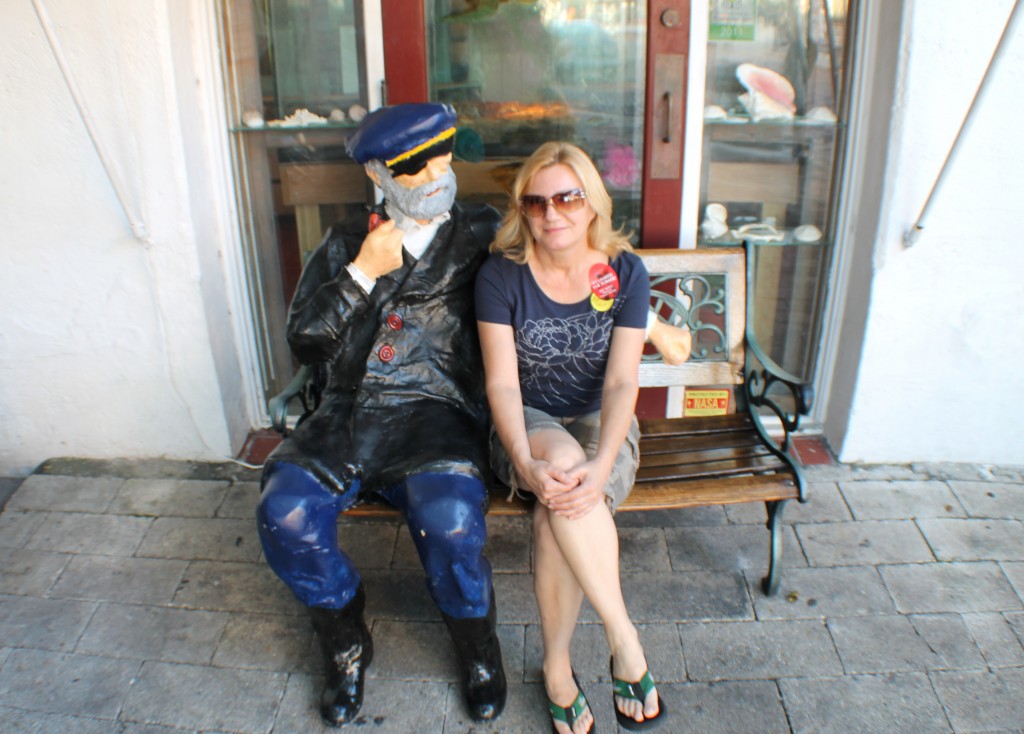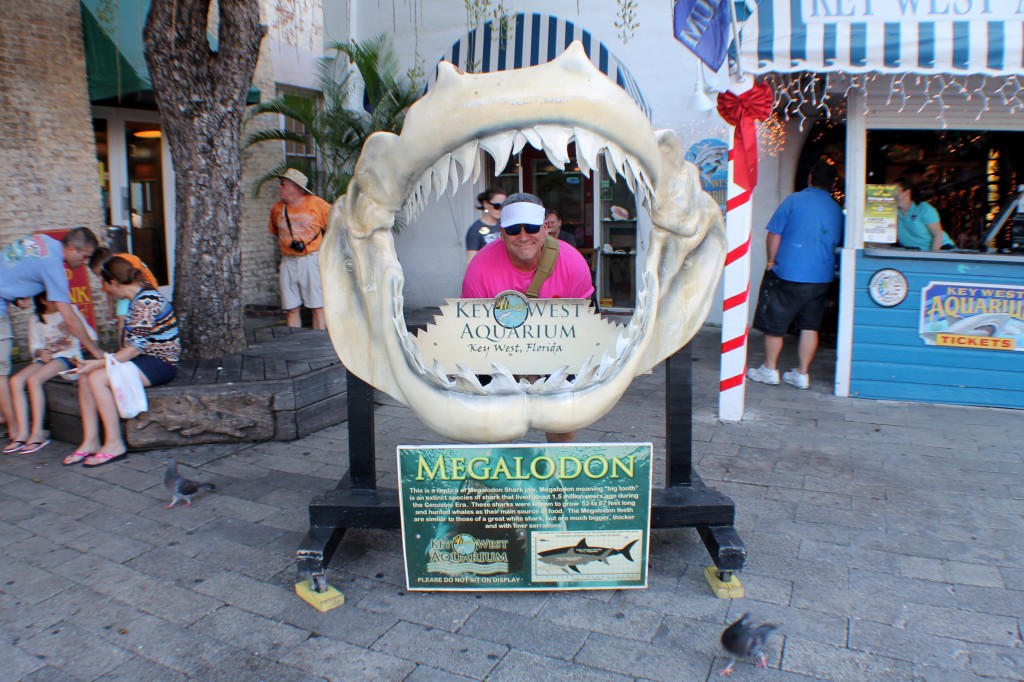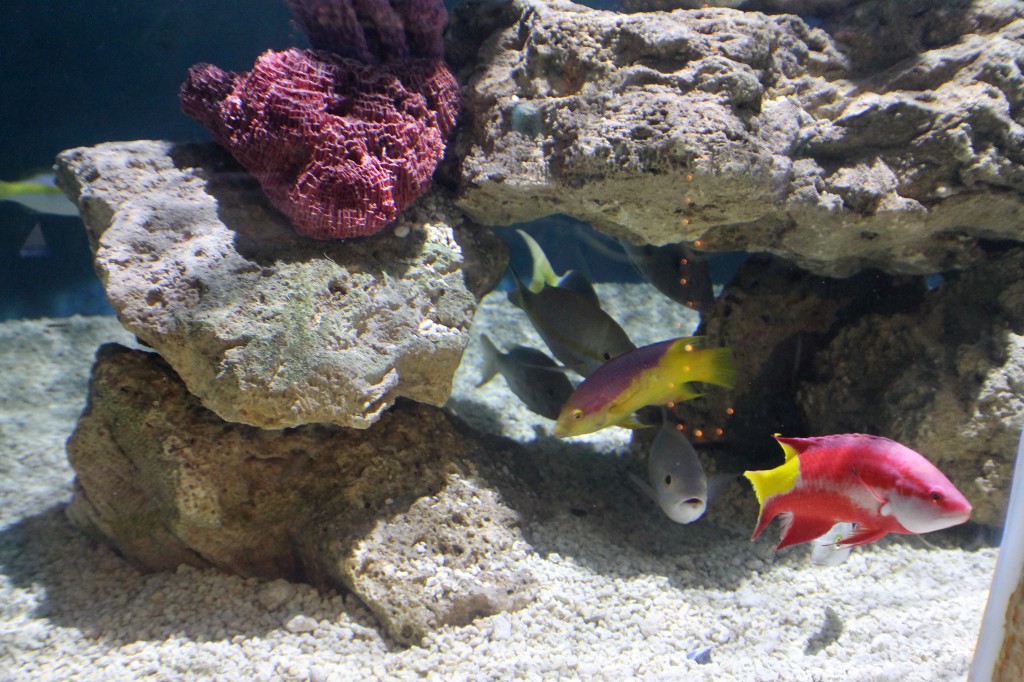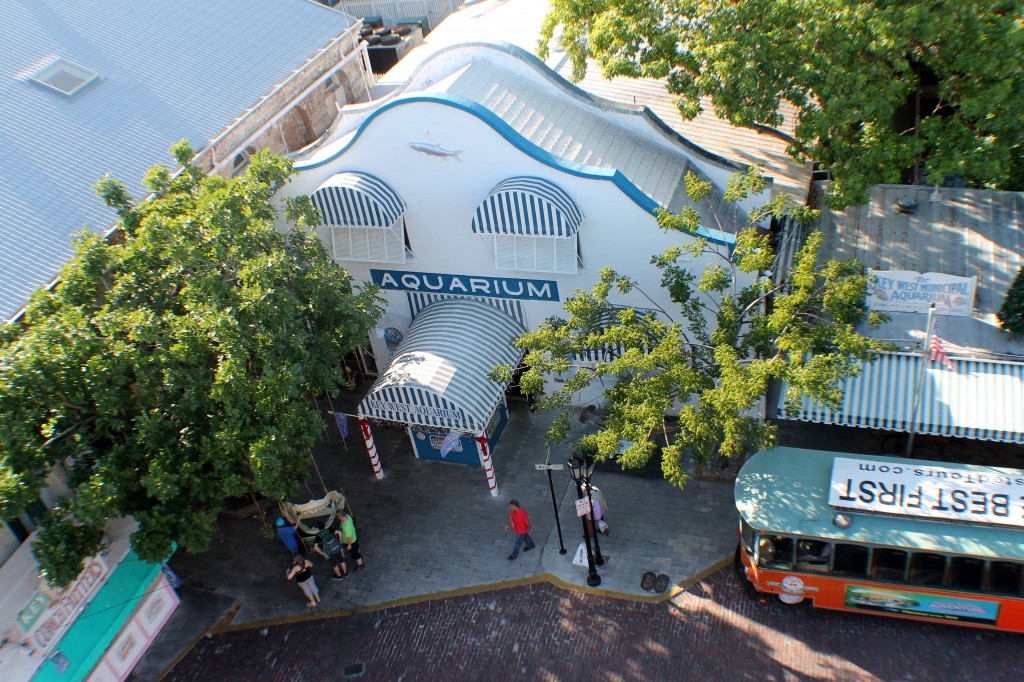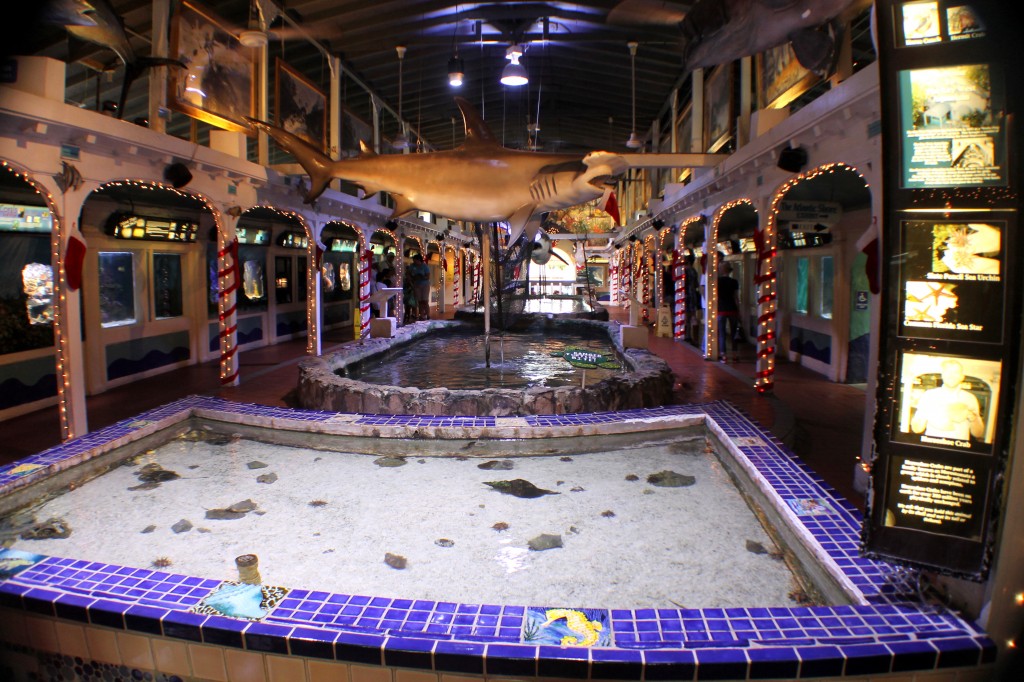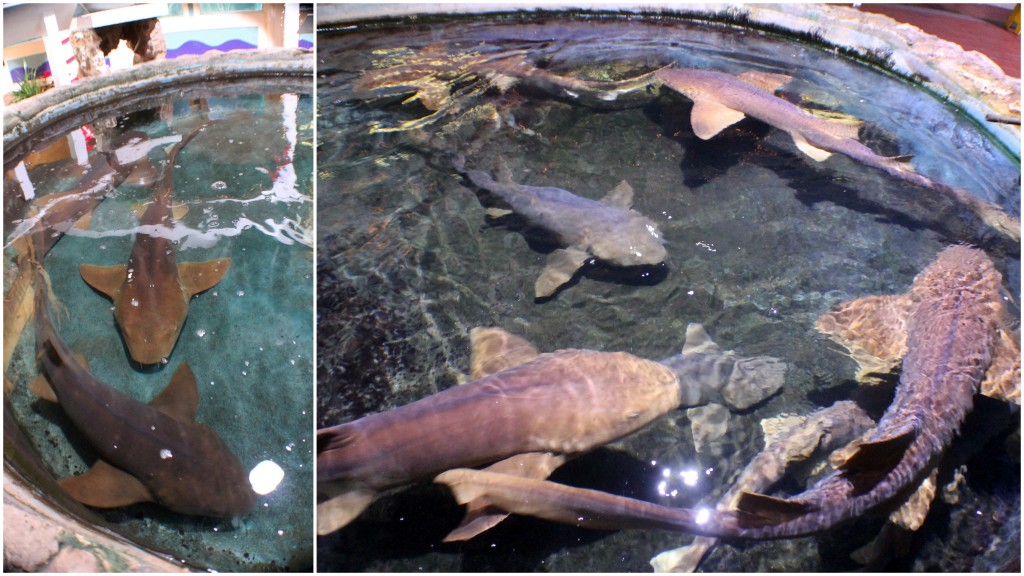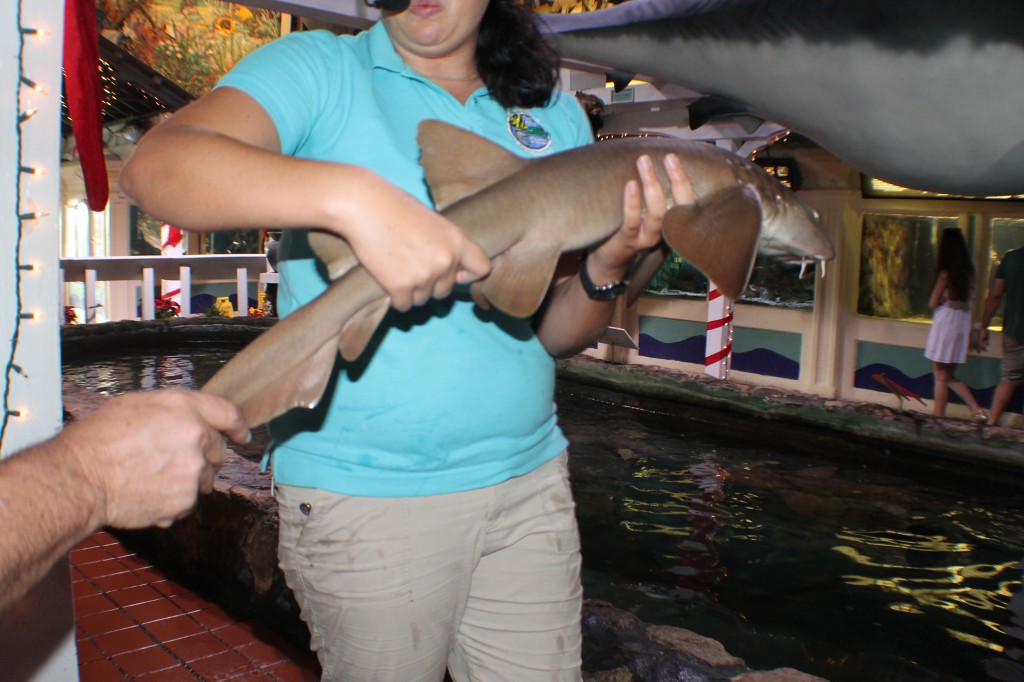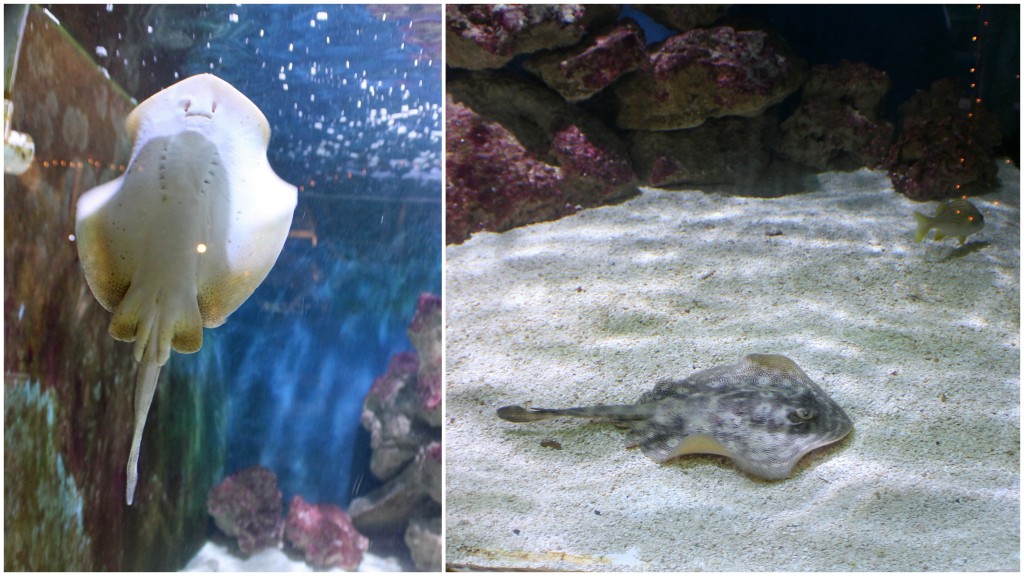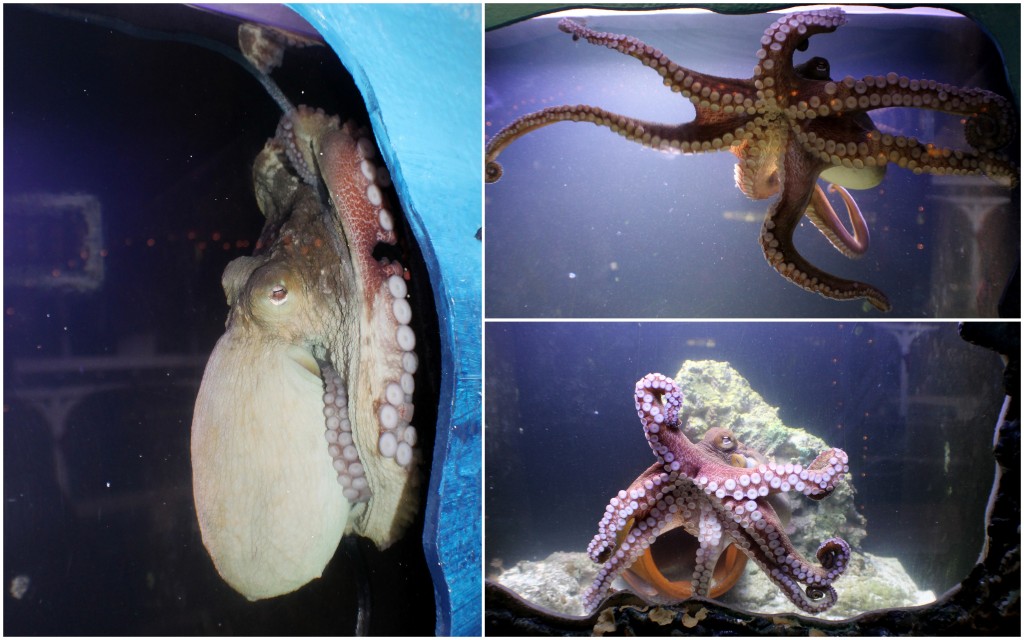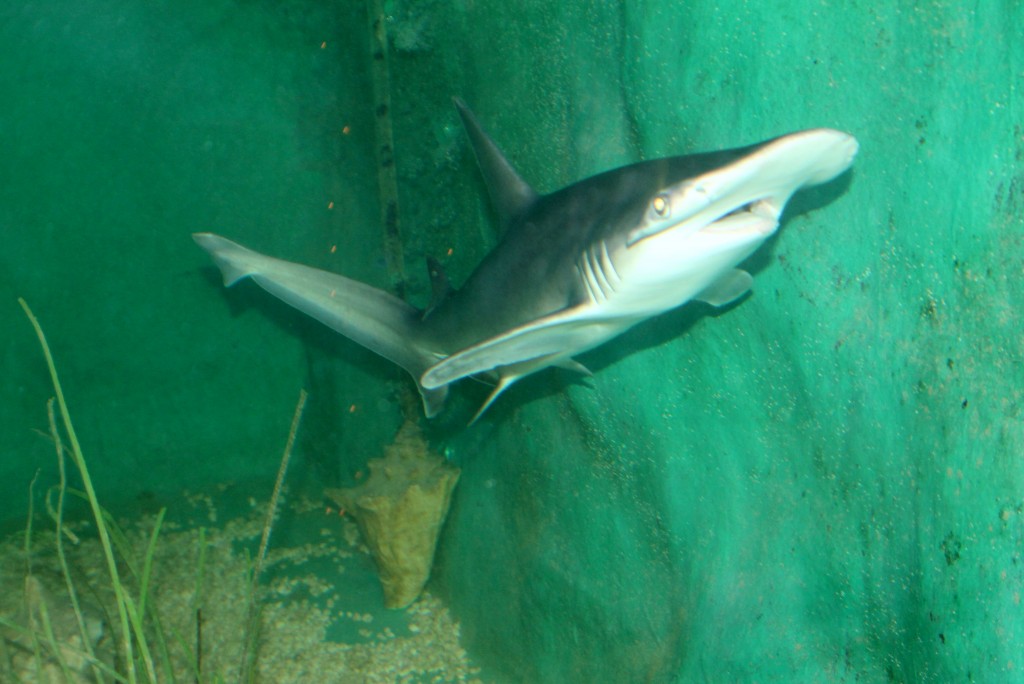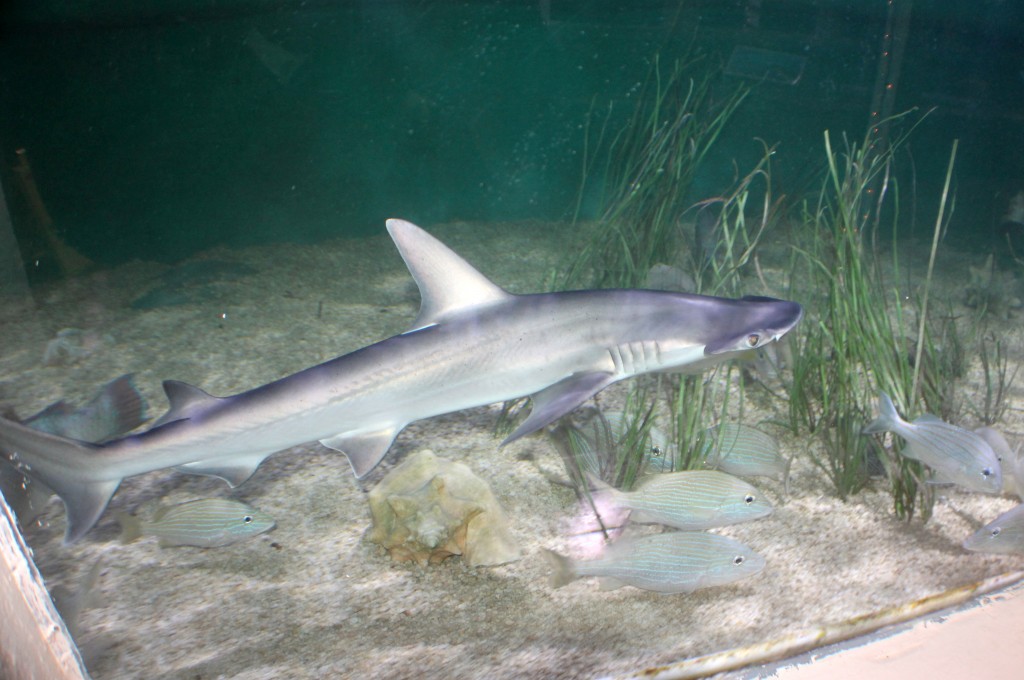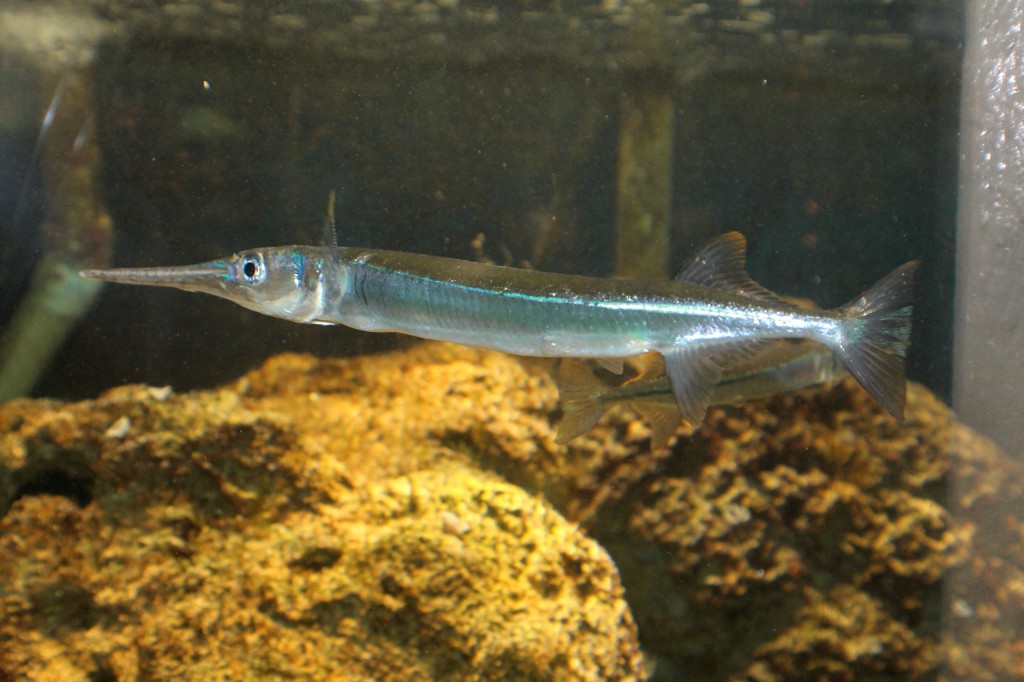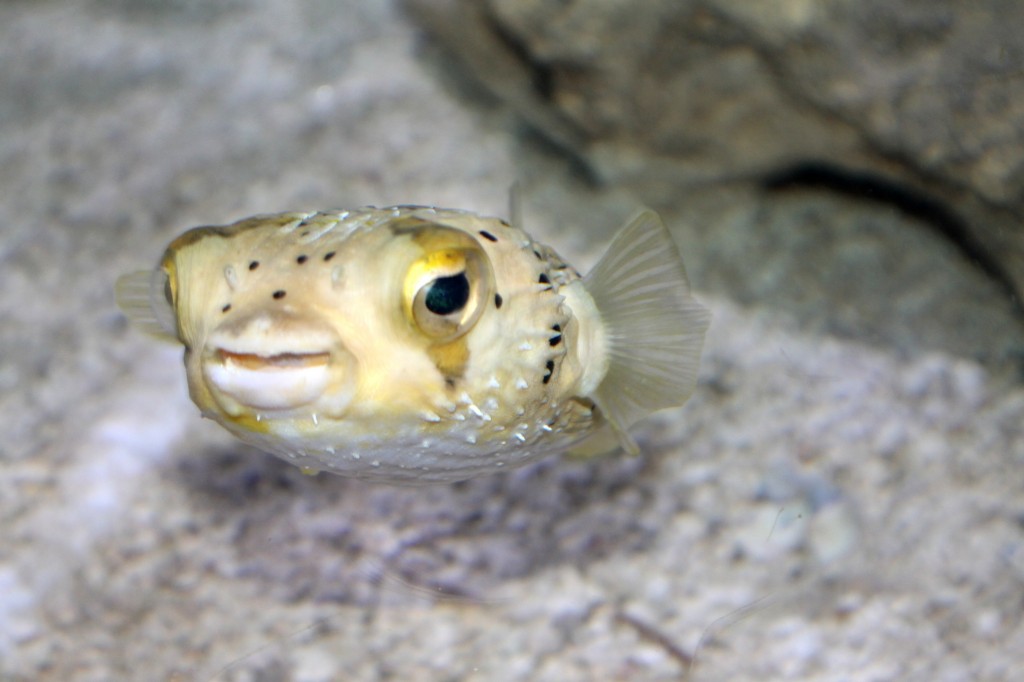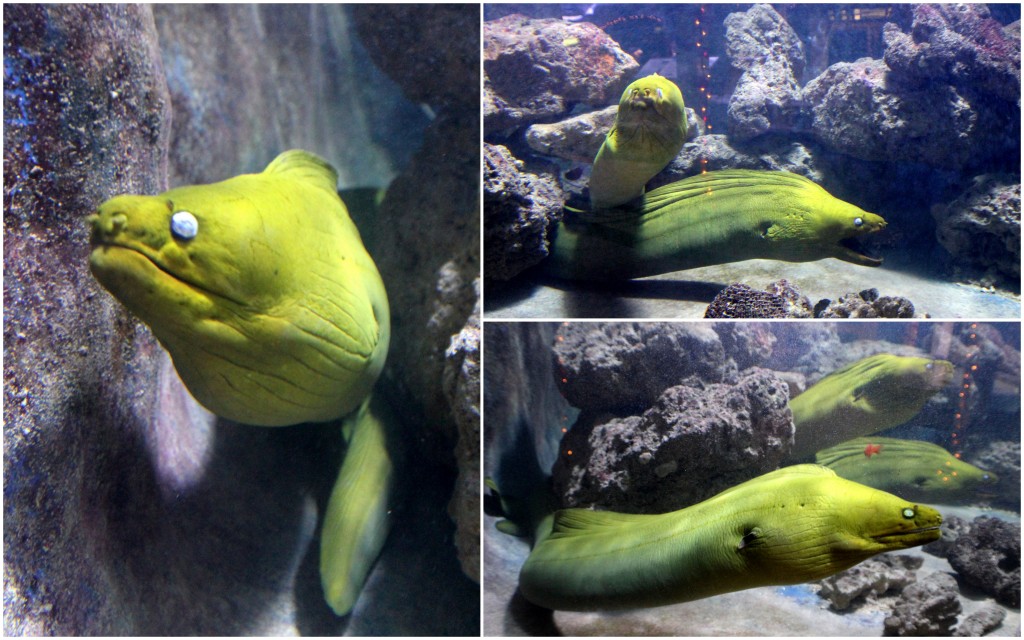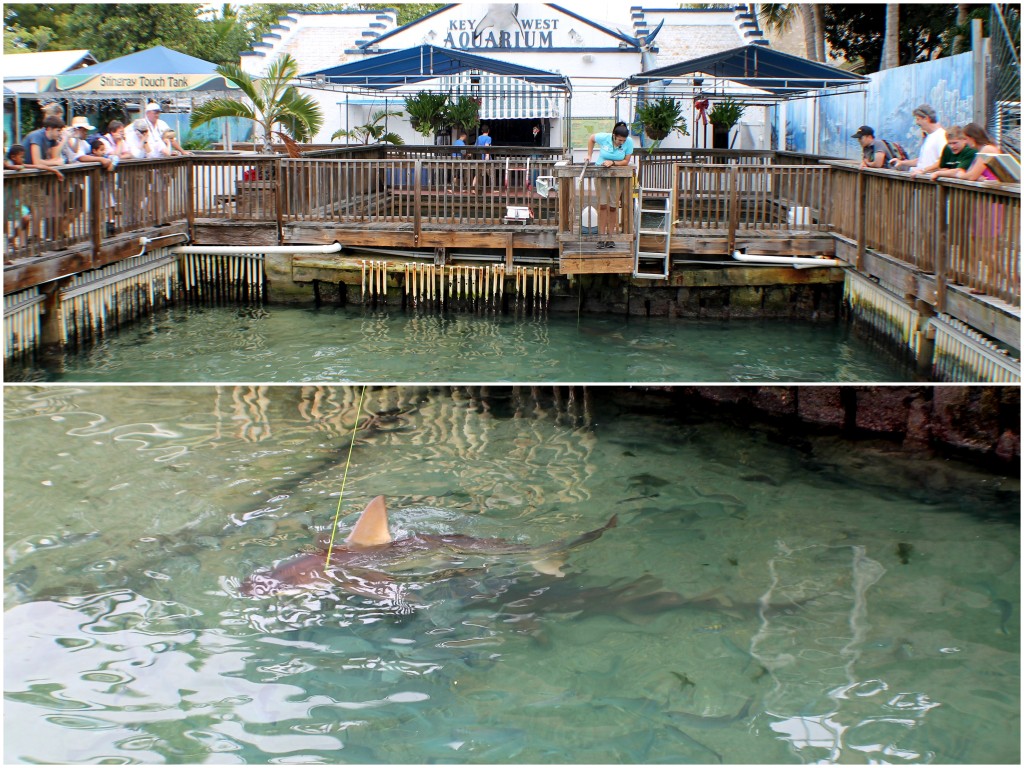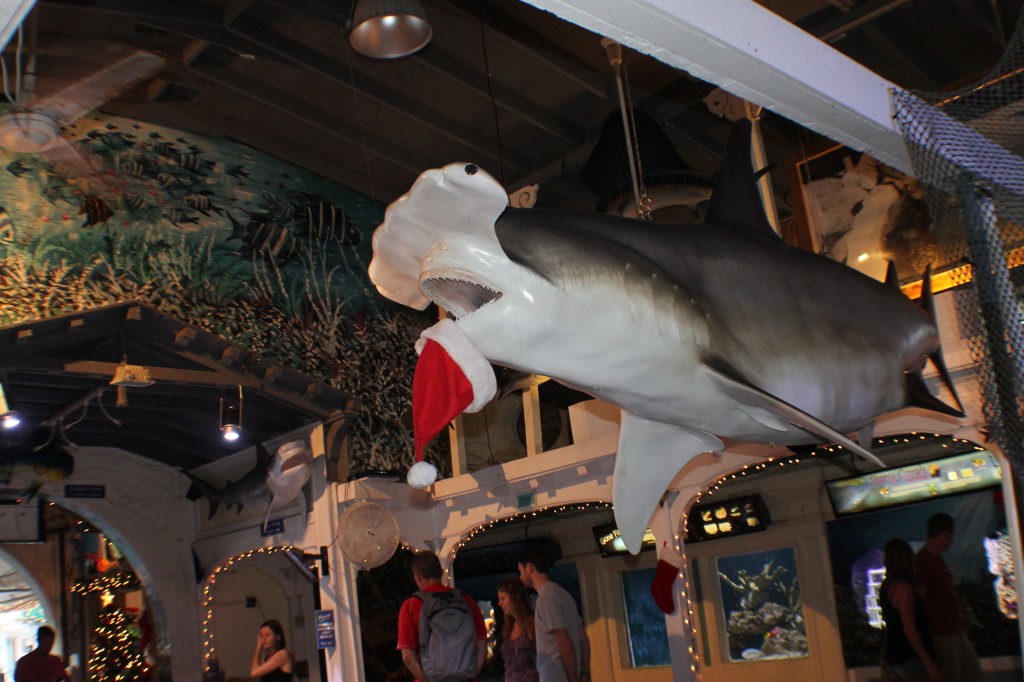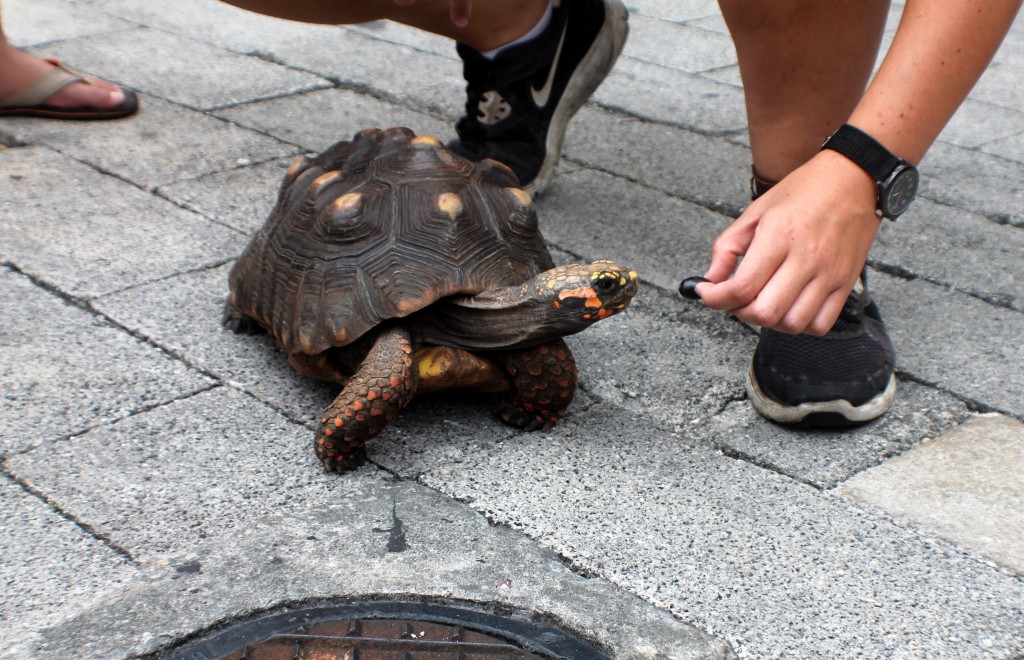The Key West Aquarium is located behind Mallory Square in Old Town. It dates back to the mid 1930’s, and is Key West’s oldest attraction. The building is small in size, but it makes up for it with warmth and charm. The Key West Aquarium is a place where we could see live sharks up close, touch a sea cucumber, and see all the major fish that live in the waters around Key West.
The entrance to the aquarium viewed from the Shipwreck museum tower.
The Aquarium consists of a main hall with arcade walkways down either side. The main central area contains several saltwater tanks set low to the ground, with no tops. We could look right down into the shallow water and see marine life. The first tank, the touch tank, is the most popular. Here, kids and adults can reach right in and pick up a sea cucumber, horseshoe crabs and hermit crabs.
There are also guided tours and feedings offered certain times during the day, which are 30 to 40 minute walking tours of the aquarium. It is led by a guide that feeds many marine animals while educating guests with interesting facts and the history of Key West. The tours begin with a short introduction of the Touch Tank followed with hand feeding of the stingrays and sharks and the Atlantic Shores exhibit. Here is a horseshoe crab.
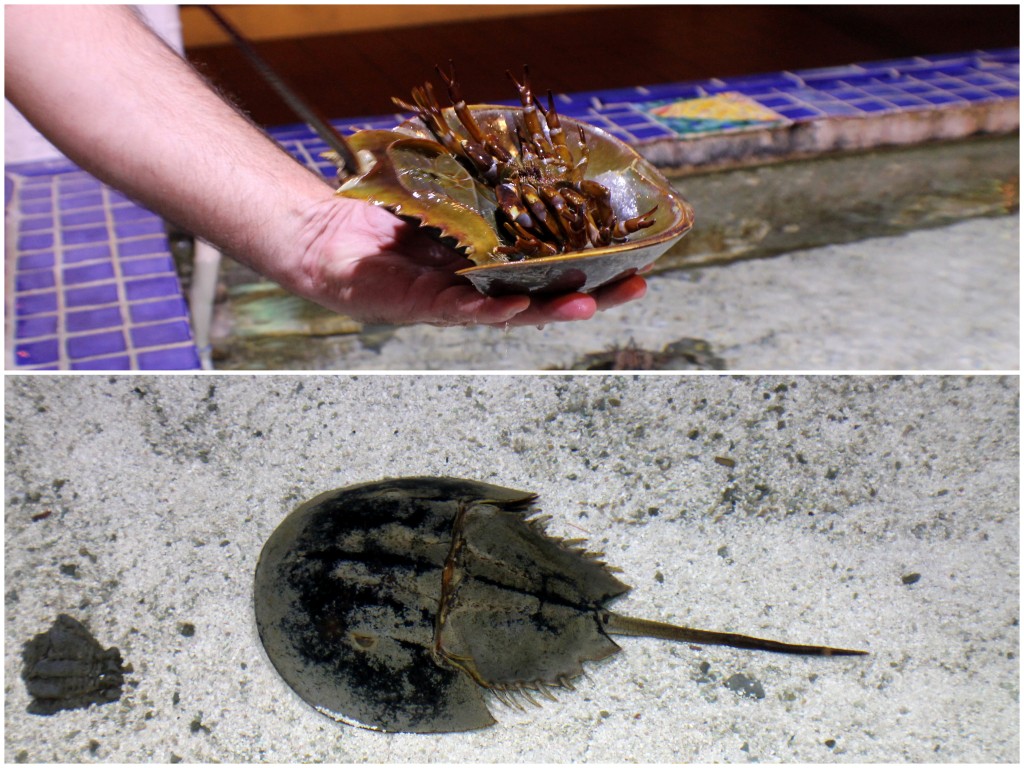
The Touch Tank features several species of whelks and of course conchs, which have become the unofficial mascot of Key West. I ‘ve seen beautiful conch shells numerous times, but I have never seen a live conch inside of it before. This is what it looks like.
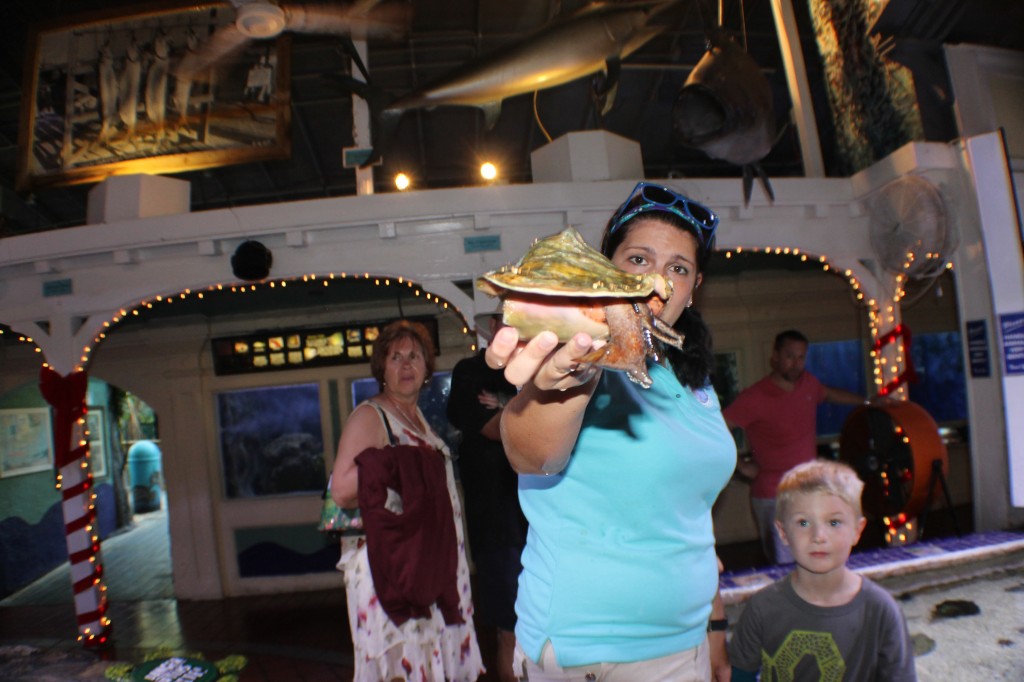
The largest tank in the back is full of nurse sharks, the most harmless sharks of all, but it’s still exciting to see them so close up.
So many nurse sharks at the edge of the tank during the feeding.
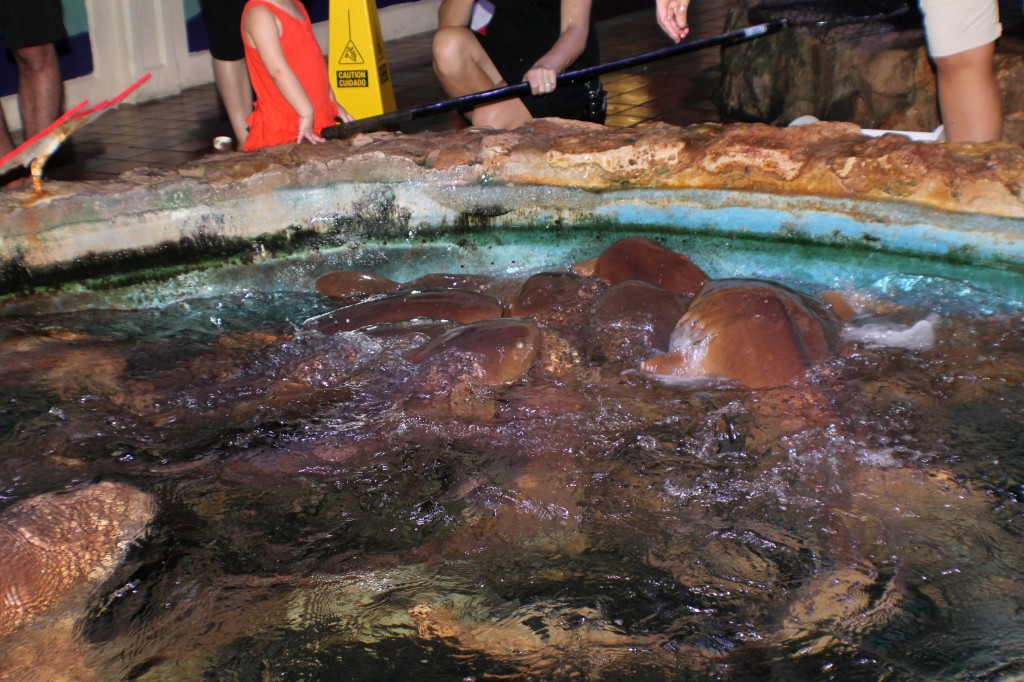
After the feeding of the nurse sharks, our guides offered the chance to meet a nurse shark face to face. Everyone was encouraged to touch a juvenile nurse shark along its tail. Per our guide, it is safe for a shark to be without water for up to 20 minutes. Have you ever wondered what shark skin feels like? It feels like mild sandpaper.
The center tank has rare Kemp’s Ridley sea turtles and stingrays in it. This tank is fun to watch because of the way the rays swim and the turtles are so cute.
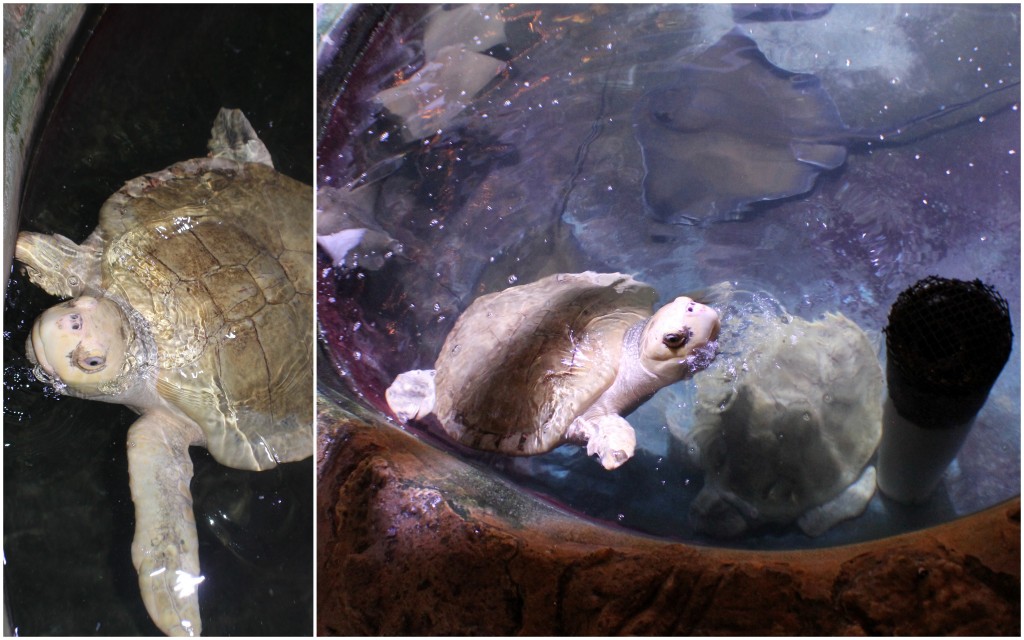
The Aquarium is actively involved in the conservation of the delicate eco-system of the Florida Keys. These turtles from outdoor tanks need individualized treatment and care.
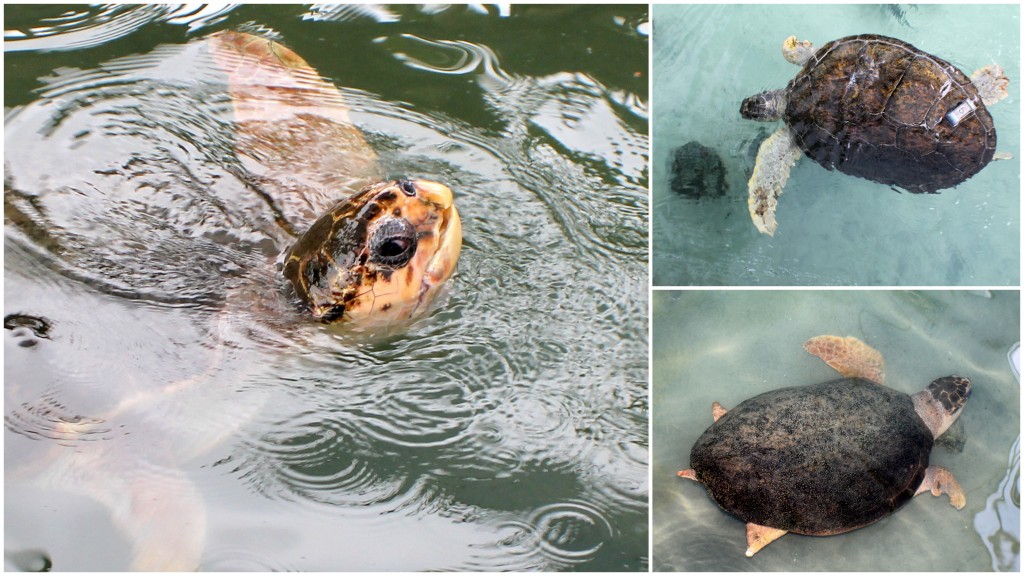
The side walls have recessed glass tanks full of common reef fish living around Key West. There are different types of Hogfish, lobster, Gag Grouper, Squirrelfish, snapper, grunts, and more. The eye-level tanks are lit from above and from the sides so you can get a really good look at the fish. I like this ghost looking stingray.
An octopus.
A Bonnethead shark.
A cute Puffer fish, which could increase its size drastically.
Moray eel is such a fascinating marine animal to me.
We walked out the back of the building towards the waterfront and there were outdoor tanks with sea turtles and other creatures. The large pen at the end contains more dangerous sharks: bull shark, reef shark, and sandbar shark. These are more aggressive and dangerous than the nurse shark, which is why they’re outside and out of reach. Out back is the Atlantic Shores exhibit. The waters are directly connected to the open sea, with bars and fencing of course, to contain the sea life. It was interesting to watch the shark feeding there.
Here is an outdoor lagoon with tarpon, jacks, barracuda and Goliath Grouper. These are all big fish, quite amazing to see. Here is an Atlantic tarpon fish.
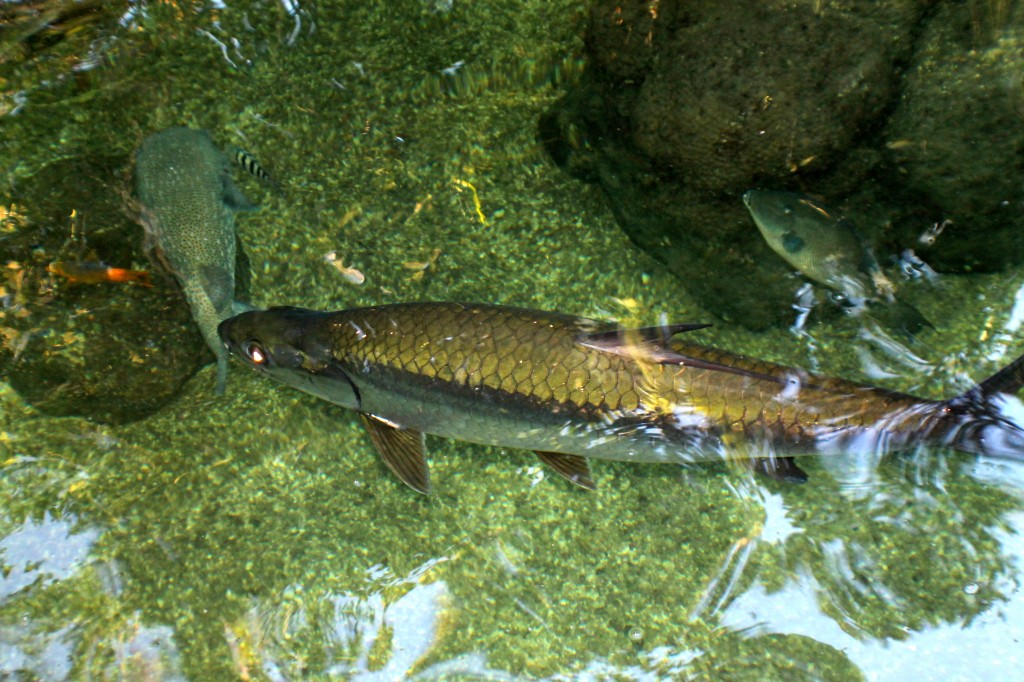
Of course, no aquarium visit would feel complete without seeing at least one large iguana. This one is a feral iguana. Feral is used to describe animals that used to belong to someone as pets or livestock, but now live on their own as wild animals. As many know, iguanas are not a native species of Florida. Many of the iguanas found in Florida today are the offspring of iguanas that were freed during destructive hurricanes, escaped from their owners or were intentionally released when they became too large for the owner to handle. Since South Florida is very similar to their native habitats climate, those iguanas were able to breed successfully and thrive in their new environment.
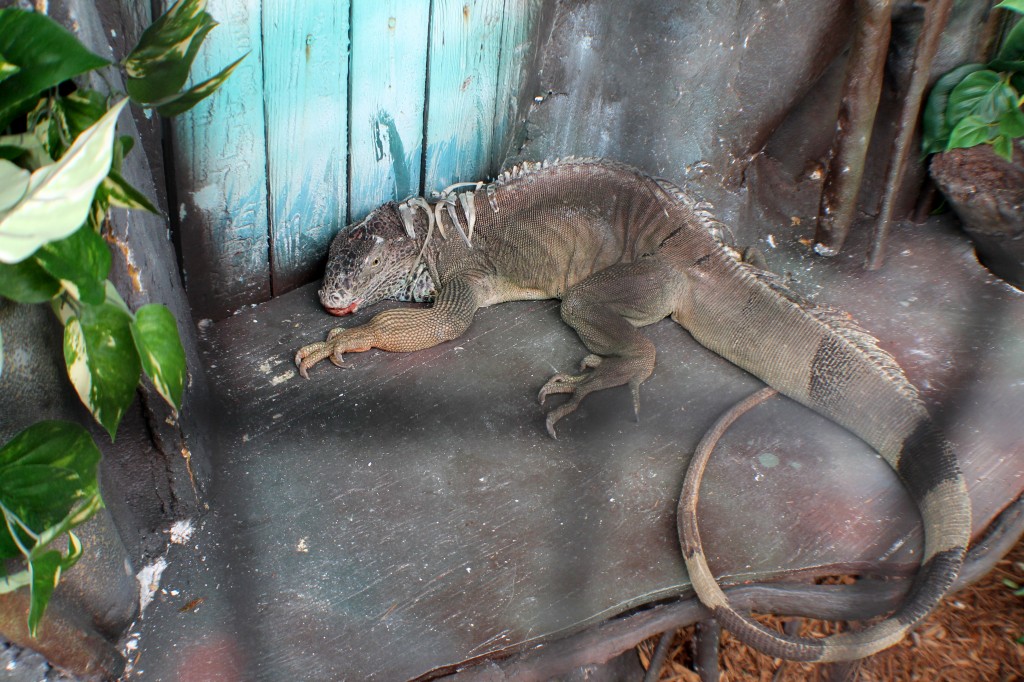
We couldn’t miss the place with a huge yellow python.
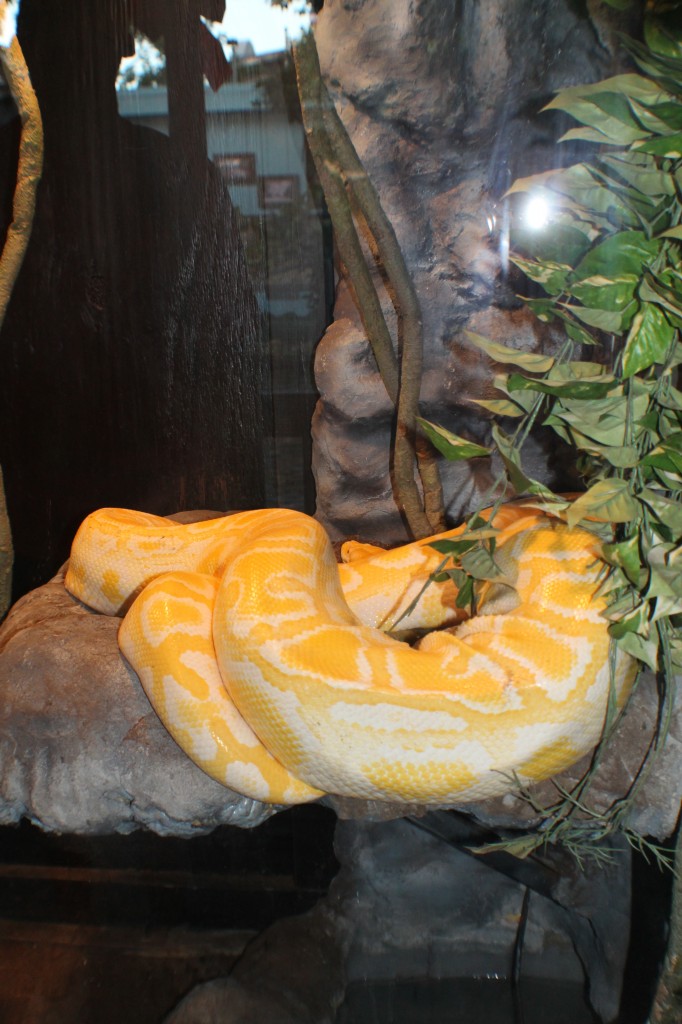
There’s a small room at the exit offering books and other items for sale. We visited the Aquarium right before Christmas, so a shark has a Christmas hat. 🙂
One of the marine biologists brought a turtle outside of the Aquarium. Kids were happy to touch it.
And there are some photo opportunities outside the Aquarium.
